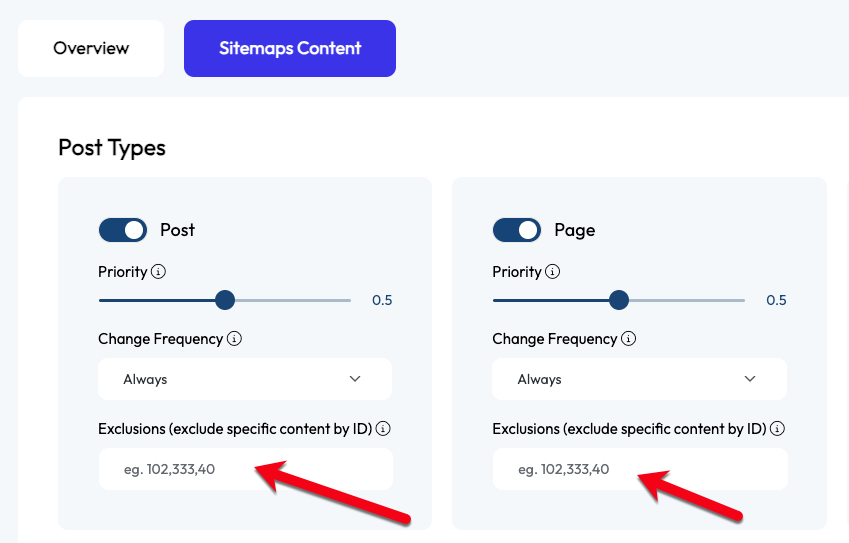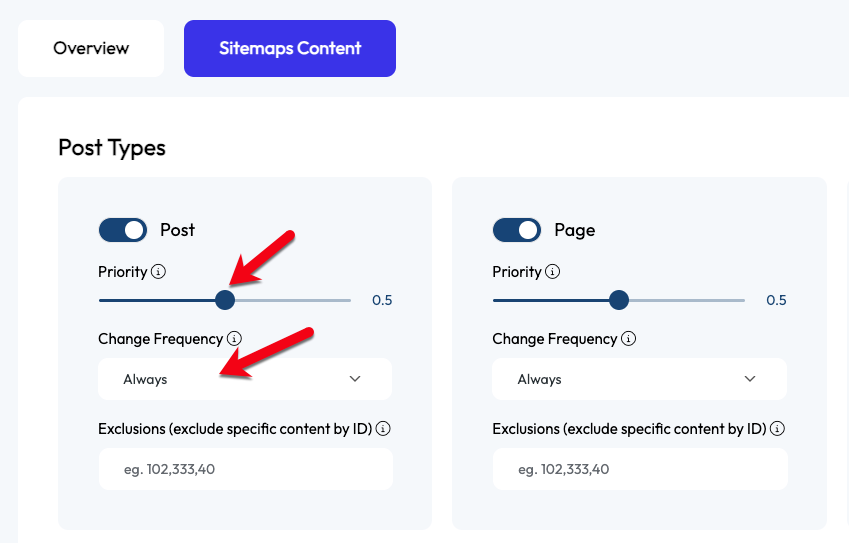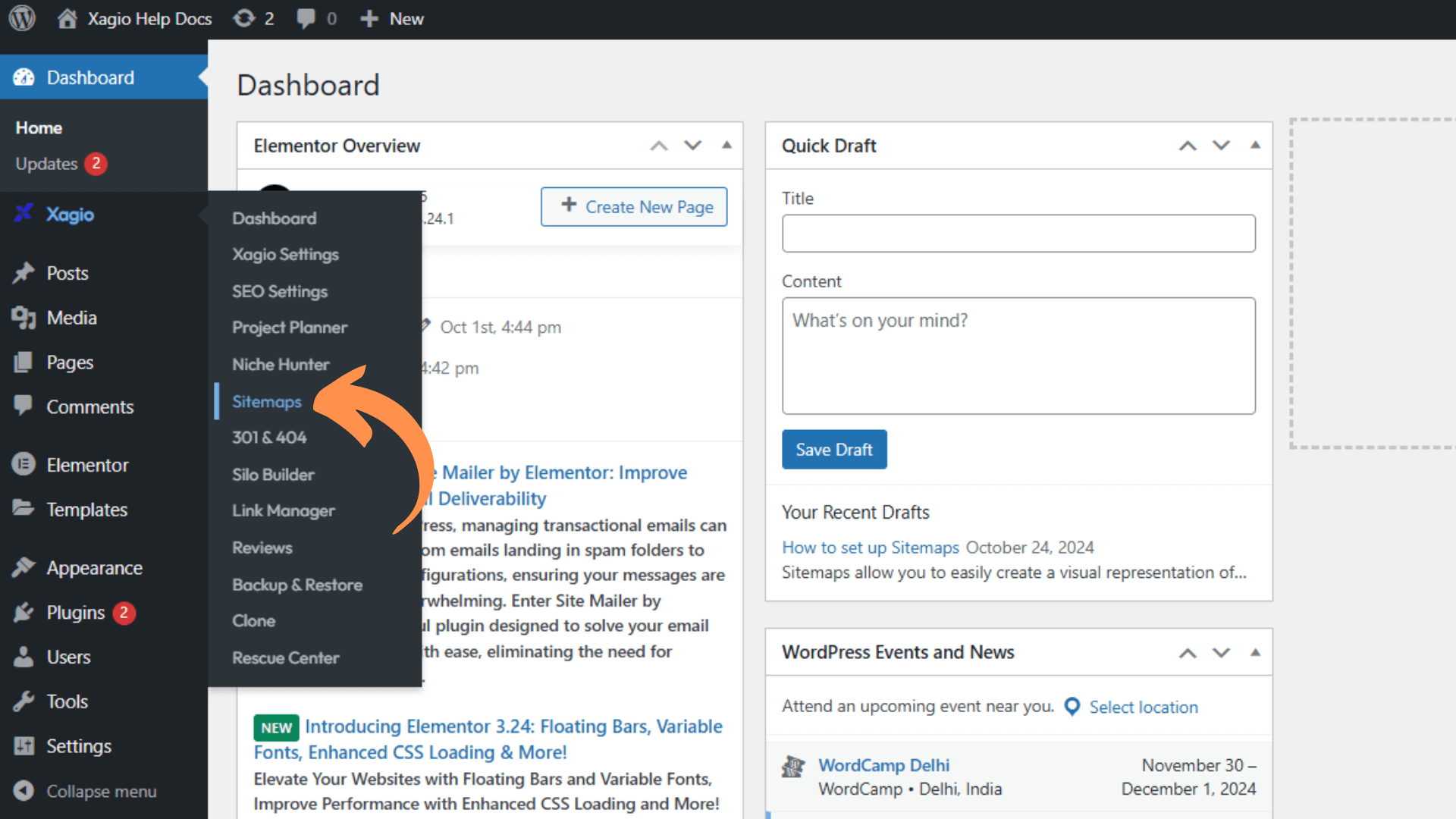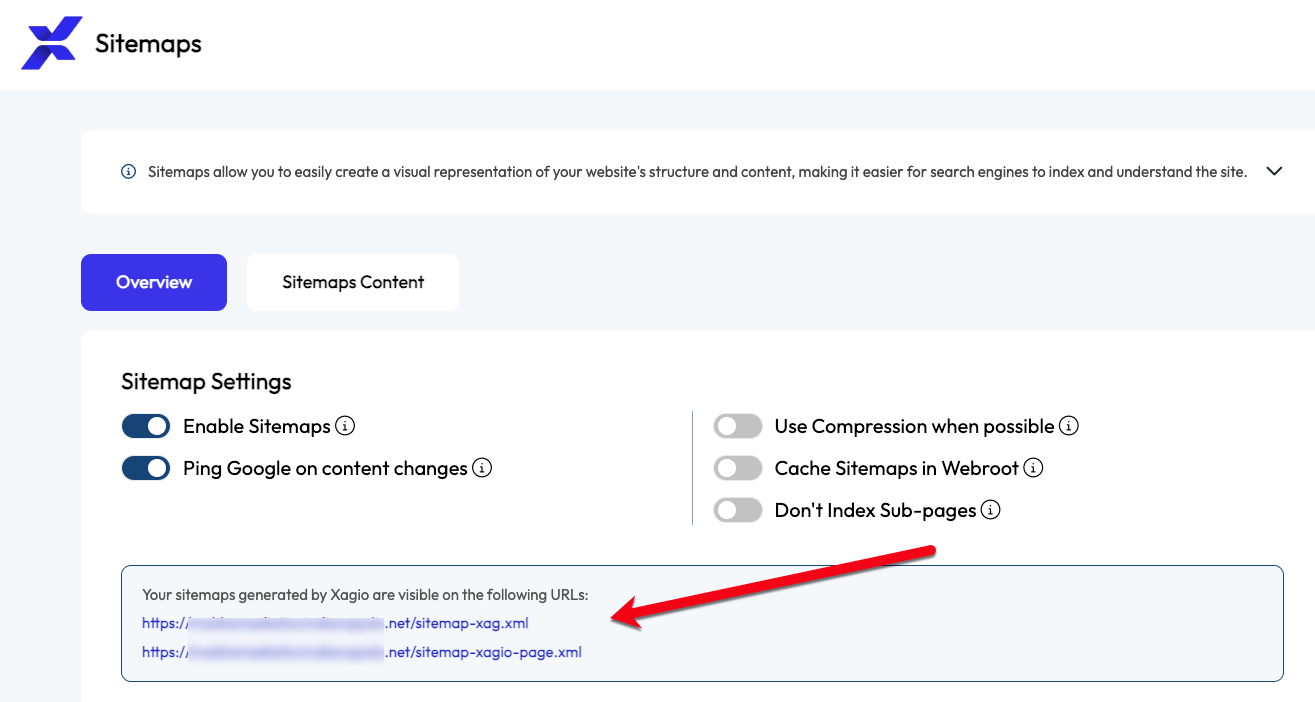None of your SEO efforts will pay off if your web pages aren’t indexed by Google and other search engines.
And while time will eventually get new content indexed, there is a better way that will only take a few minutes.
Whether you’re working on a brand new website or you have a site with a ton of content, using sitemaps and Google Search Console is the key to indexation.
Fortunately, Xagio includes Sitemaps features, making it easy to set up and highly efficient for keeping Google updated about changes on your site.
Keep Your Sitemaps Organized
While Xagio can help you keep your sitemaps updated and make changes whenever you add content or change a URL, there are a few manual steps you need to take.
Add Pages To Exclude From Sitemaps
Xagio offers a simple way to exclude specific pages and posts that you don’t want to index in search engines.
All you need to do is get the post or page ID and enter the number in the “Exclusions” section.
There can be all sorts of reasons for doing this, like temporary landing pages or if you’re split testing different versions of landing pages for paid traffic sources.
Remove Old Or Outdated Sitemaps
It’s always a good idea to check what sitemap URL is listed in Google Search Console. If you’ve used other plugins or SEO tools, then it’s possible that you’ve got multiple sitemaps.
This isn’t a major issue, but it’s best to work with just one master sitemap and only have that used for page indexing purposes.
If you see multiple other sitemaps in GSC, then click on the one you want to remove to open the details screen.
Then, click on the 3 dots icon at the top right and then on the “Remove sitemap” button.
Now it’s time to get your Xagio sitemap submitted to Google.
Easy Guide To Submitting Your Sitemap To Google
For this guide, I’m going to show you how to submit your XML sitemap to Google Search Console, formerly known as Google Webmaster Tools.
Step 1: Configure Your Sitemap Settings
Xagio has settings that allow you to indicate how often posts and pages get updated and whether there should be a priority order for crawling the content.
We have already set the frequency value to always, which is the most frequent, and you can change the priority as needed.
If you tend to update your website with new content in the form of posts, then it would make sense to set a higher value on the Post Priority slider compared to the Pages.
These variables are then set in the sitemap file content for Google and other search engines to use as a guideline.
Step 2: Get Your Sitemap URL From Xagio
Log into your WordPress dashboard and navigate to the Sitemaps tab of the Xagio plugin.
We configured Xagio to automatically enable sitemap features, and when you get to this tab, you should see the links to your sitemaps.
Simply copy these links or keep the page open on a separate tab so that you can easily access them shortly.
Step 3: Log Into Google Search Console
Start by logging into Google Search Console with the account used to register the website. If you haven’t set up Google Search Console for your website, then use Google’s instructions to get set up.
Navigate to the Sitemaps tab and check if you have any sitemaps already submitted.
If you’ve used other SEO or Sitemap tools, then it’s possible that you have an old XML Sitemap URL in GSC–it’s always best to have just the Xagio sitemap linked in the account.
Step 4: Submit Your Sitemap URL
Copy and paste the first link from Step 1 above into the text input field in GSC.
Then, hit the submit button and wait until it has finished processing.
Repeat this step for the second link to ensure that all sitemap files are correctly listed in GSC.
At this stage, Google will start using your sitemap files to crawl the website, and you can fine-tune the settings to get your site crawled more regularly.
Use Xagio’s Free Sitemaps Tool
Xagio makes managing sitemaps easier than any other available SEO tools, and you get a ton of extra free features that other plugins charge extra for.
It takes just minutes to install, and with the free features alone, you’ll be able to completely revolutionize your SEO strategies.
Get started with Xagio today and see how much easier, faster, and more effective all of your optimization tasks become.






